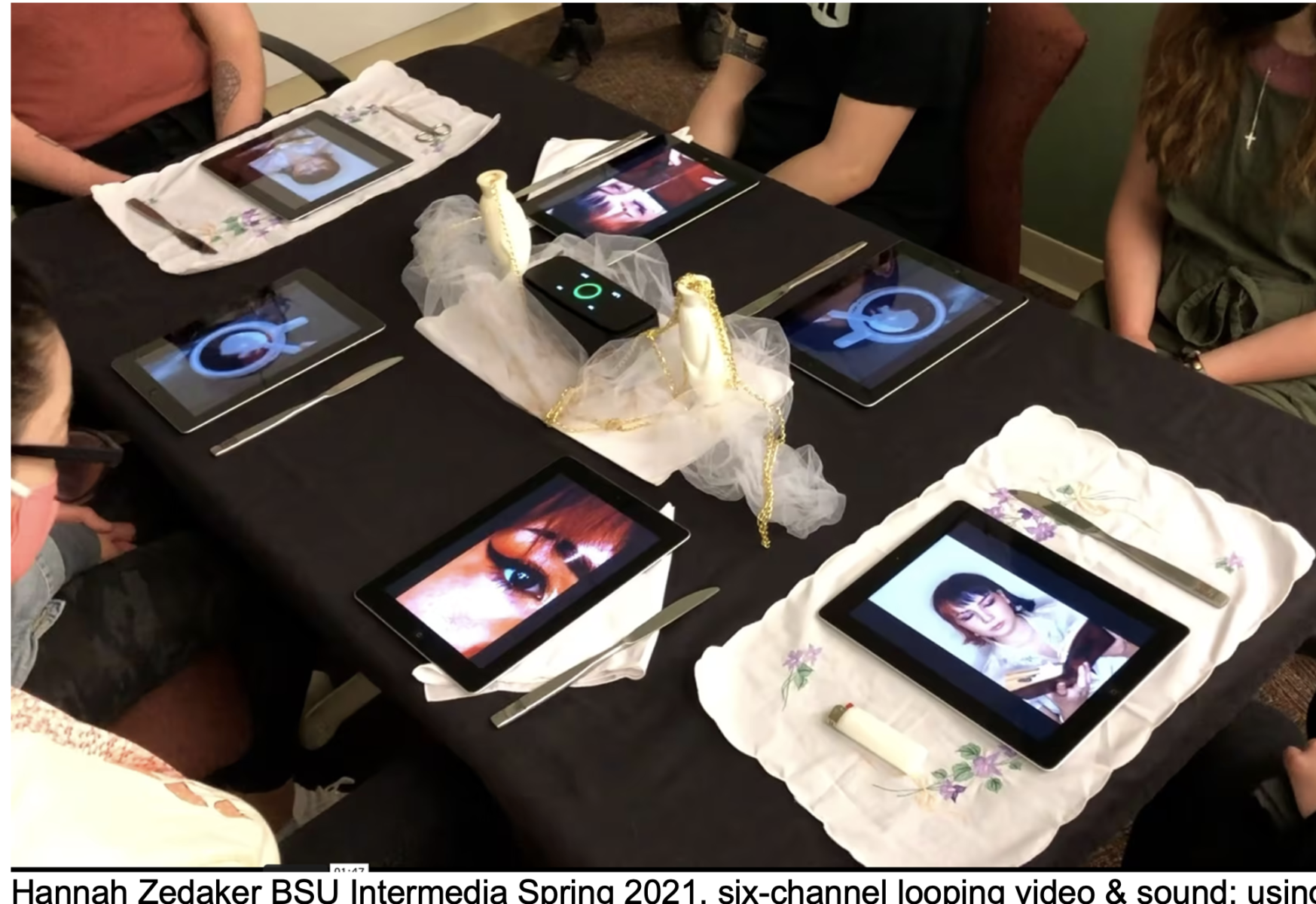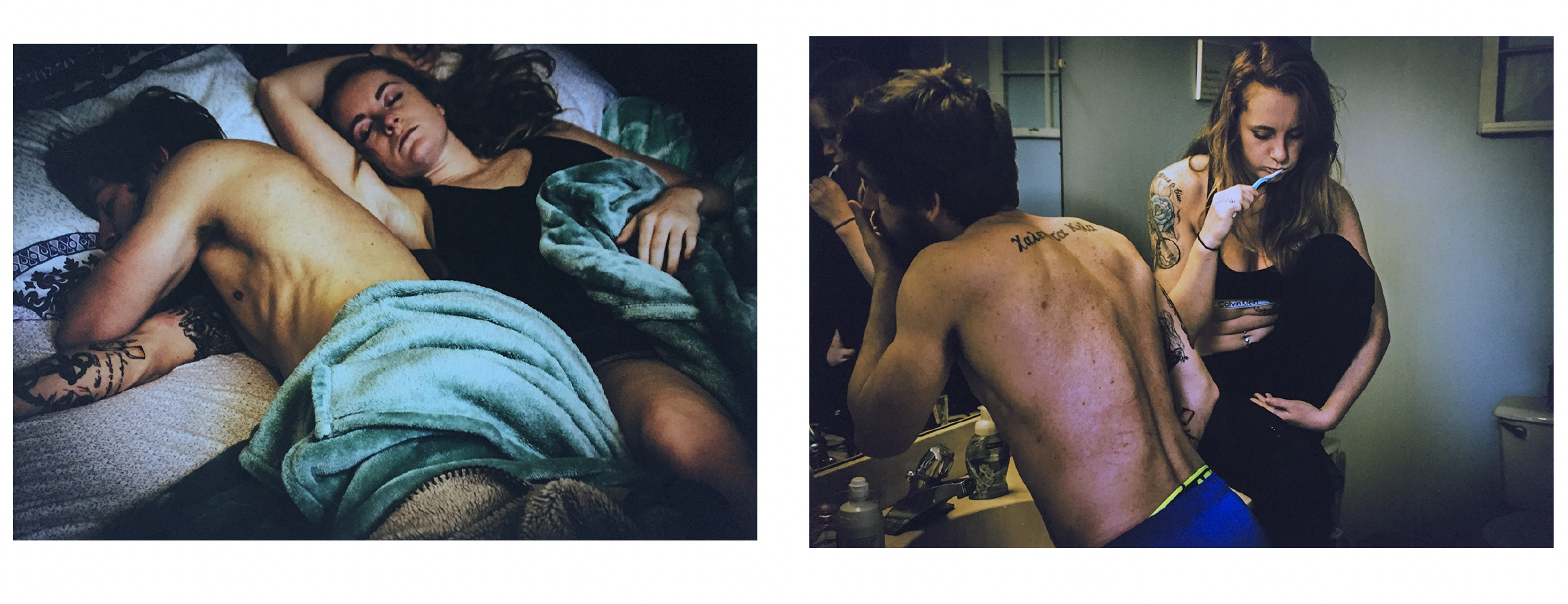Teaching
Philosophy • Documentation
Teaching Employment
2024-Present Assistant Professor of Visual Studies and Foundations, Department of Visual and Media Art, Grand Valley State University, Allendale, MI
2023-2024 Associate Director of the School of Art, Ball State University, Muncie, IN
2019-2024 Assistant Professor, School of Art, Ball State University, Muncie, IN
2015-2019 Assistant Professor, College of Humanities and Fine Arts, Murray State University, Murray, KY (Tenure and Promotion to Associate Professor Approved Summer 2019, Murray State University)
2012-2015 Assistant Professor (contract), School of Art, Ball State University, Muncie, IN
The classroom becomes a model to engage with art’s possibilities including:
Fostering an understanding of art in relation to students’ unique developing art practice while providing them with relevant work examples, historic/personal context, and the fine arts use of cross-disciplinary/humanities research. Students should gain skill and confidence in their ability to make art after the course ends. Technical and formal instruction is key to support course and student objectives with the expectations that students will engage in their own independent creative research strategies dependent on their experience level. Finally, I establish art’s relationship to civic engagement, community building, and the power/ethics of representation. Together as a class, we create an environment to promote dialogue and critical feedback using peer reviews, critique, collaborative projects, and occasions for student directed activities/deadlines.
Art is essential to social progress and through it students can attain individual empowerment, problem solving skills, and a sophisticated understanding of the world.
The ability to contribute to social progress through creative research is presented to my students by exposing them to diverse art practices including but not limited to contributions towards: the advancement of form, technology, institutional critique, representation of unique or underrepresented voices, scientific research, political impact, as well as philosophical meditations through media. Course criteria reflect the variety of these examples to encourage students to find their personal interest/voice while appreciating the value of difference found in their peers’ work.
Self-directed learning and skill sharing is vital to the classroom as well as future careers.
Teaching a medium or software creates an opportunity to discover the virtues of communicating through the synthesis of form, technology, and language. I supply my students with a variety of strategies to approach complex technical and conceptual problems, an environment to share their discoveries, as well as skills to use educational resources such as tutorials on their own. When I learn something new through teaching or from a student, I share that experience with the class so they understand that learning will be a continuous part of their practice. I create occasions for the students to lead the class through presentations, skill sharing. I then present these activities as professional expectations.
Making involves taking risks as well as experimentation, and students need see the value of critical inquiry as individually rewarding.
There is a strong experimental tone in my classroom. Students learn that exploring an unknown through the experiment can be a worthwhile opportunity, and unintentional results promote progress rather than reflect failure on their part to expertly produce a preconceived solution. I expect students to push their work past their comfort zone and to consider revising specific objectives if their creative research leads them in a more productive direction. My intention is to provide a nurturing environment for students to step into the unknown with the classroom as their guild and peers as collaborators/colleagues. Above all they need to contribute to their field by enacting compelling visual communication strategies and value the necessity of finding personal motivation to fuel creative investigation throughout their careers.
Courses Taught 2012-2024
Ball State University 2019 – 2024
Assistant Professor, School of Art, Ball State University, Muncie, IN
ADS103 4D Foundation Studio (taught both in-person and asynchronous online) Introduction to technical, formal and conceptual use of four-dimensional art practices including time and space, sound, moving images, performance and interactive projects. Emphasis placed on development of ideas by exploring strategies for artistic thinking, creative process and problem solving, and interdisciplinary collaboration.
ART200 Intro to Computer Art (taught both in-person and asynchronous online) Emphasis on combining digital tools with analogue process, time, space, context, interaction, and chance. Software: Photoshop, Illustrator, After Effects, Dreamweaver, Audacity, and computer proficiency. (taught both in-person and asynchronous online)
ART234 Intermedia: Experimental Video Comprehensive introduction to experimental video and its impact on contemporary new media art practices, surveying new media video art and artists in a range of formats including installation and performance. Technical demonstrations and workshops will cover camera, sound, lighting, pre-production, and digital editing techniques.
ART322 Intermedia: Space & Time Expands upon concepts, aesthetics, and techniques of video and time-based electronic art. Topics include digital video, interactive media, sound, installation, and experimental time-based genres. Work and readings by electronic and intermedia artists will be screened and discussed.
ART342 Intermedia: Production Emphasizes advanced production and specialized topics within video and intermedia art. Continues the development of new techniques and concepts.
ART424 Intermedia: Professional Practice The development of a body of work refining approaches to video and intermedia art with an emphasis on professional practices. Projects can be collaborative and interdisciplinary or independently produced. All work will be produced in consultation with the instructor. External exhibition opportunities will be explored.
ART601: Graduate Critique Seminar This interdisciplinary course for critical dialogue spans all three years of graduate study. From their respective studio areas, students will present in-progress and finished work for discussion with other course participants. Course assignments may include: additional studio projects, readings, research, and writing. Semester rotation of graduate faculty assures a diverse approach towards criticism and analysis.
2015-2019 Assistant Professor, Department of Art & Design, Murray State University, Murray, KY (tenure and promotion approved but left appointment before taking effect)
Study Abroad Berlin Mobile Media Maker: an introduction on how everyday media tools such as cellphones and DIY strategies can be applied for thoughtful and creative impact while also considering ethical issues that are unique to mobile forms of media.
ART 583 Directions in Photography: Concentrated study of photographic art as related to student’s professional goals.
ART 584 Directions in Intermedia: Concentrated study of moving image and or sound art for a gallery, performance, and/or web environment as related to student’s professional goals.
ART 483 Moving Image: Gallery/Intermedia: Emphasis: an introduction to making/installing time-based art work in the gallery including performance, video, sound, pre-cinematic objects as a means of creative expression. Software: Premiere, Audacity, After Effects, Photoshop.
ART 385 Moving Image for the Screen: Emphasis: moving image and sound as a means of creative expression for theatrical display using digital video and audio production processes. Software: Premiere, Audacity.
ART 385 Introduction to Video: Emphasis on moving image and sound as a means of creative expression using digital video and audio production processes. Software: Premiere, Audacity.
ART 383/384/483/484/583/584 Photo II – VII stacked course (Semester Theme Horizon: Past, Present, and Future): Emphasis: alternative photography and pre-cinematic applications using digital tools.
ART 383/384/483/484/583/584 Photo II – VII stacked course (Semester Theme Color/Landscape): Emphasis: color photography, contemporary landscapes, and combining strobe with natural light.
ART 383/384/483/484/583/584 Photo II – VII stacked course (Semester Theme Alchemy): Emphasis hybrid: darkroom/digital, plastic cameras/flash, collaboration/installation applications of photograms.
ART 383/384/483/484/583/584 Photo II – VII stacked course (Semester Theme Digital Imaging): Emphasis: digital imaging as a medium in relation to painting/drawing, sculpture, and the various forms of contemporary photography as a digital process and medium.
ART 382 Photography I: fundamentals of fine art photography through the use of single-lens-reflex cameras, DSLR (digital) & SLR (film). Software: Photoshop, Camera RAW; darkroom: hand processing black and white negative film; large format pigment printers.
ART 111 Two-Dimensional Design: fundamental elements and principles of 2D fine art ideation, production, and critique.
2012-2015 Assistant Professor, School of Art, Ball State University, Muncie, IN
ART233 Advanced Digital Imaging: taught, and evaluated students in advanced fine art digital imaging. Split class with upper level students working on independent projects that included print, multi-media and 3D work. Included: Adobe Photoshop, large format digital printing, Digital SLR, film/physical media to digital processes.
ART231 Photo 1: Fine art photography using wet process black and white film. Included: SLR 35mm, lighting, film processing, darkroom printing, and some alternative processes.
ART200 Intro to Computer Art: Emphasis on combining digital tools with analogue process, time, space, context, interaction, and chance. Software: Photoshop, Illustrator, After Effects, Dreamweaver, Audacity, and computer proficiency.































